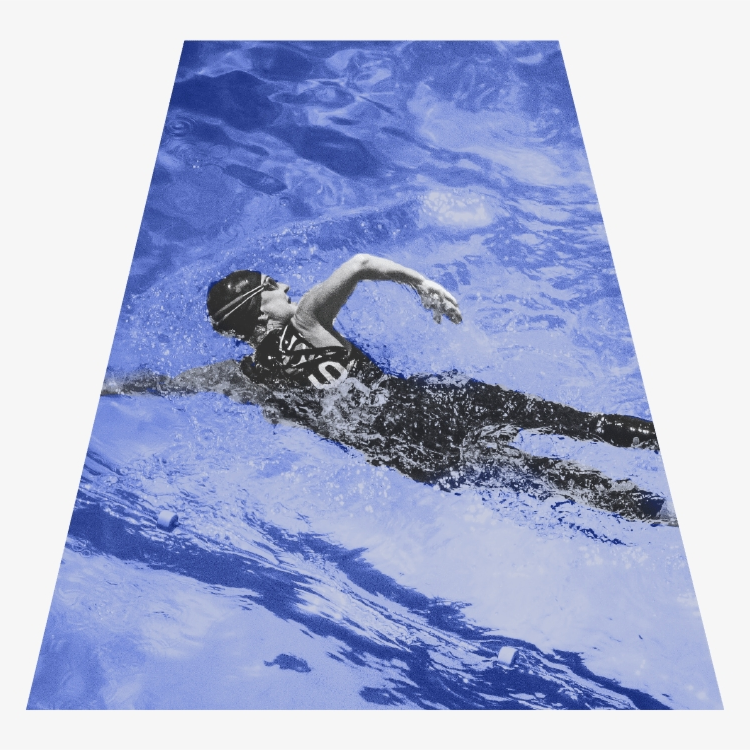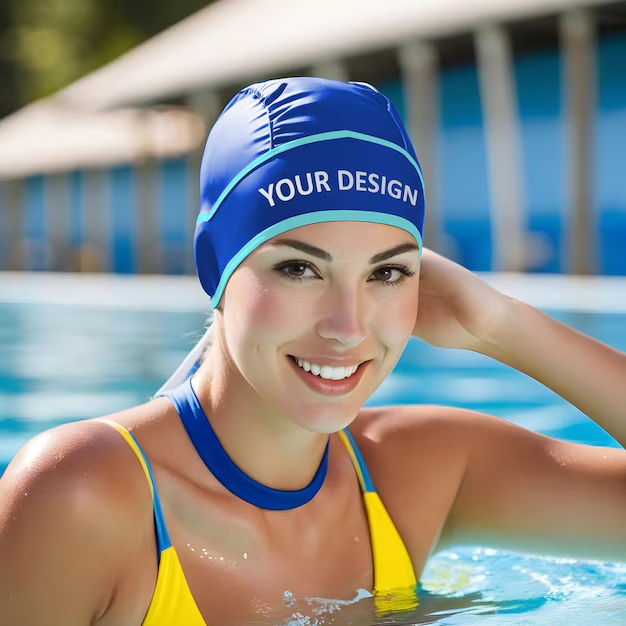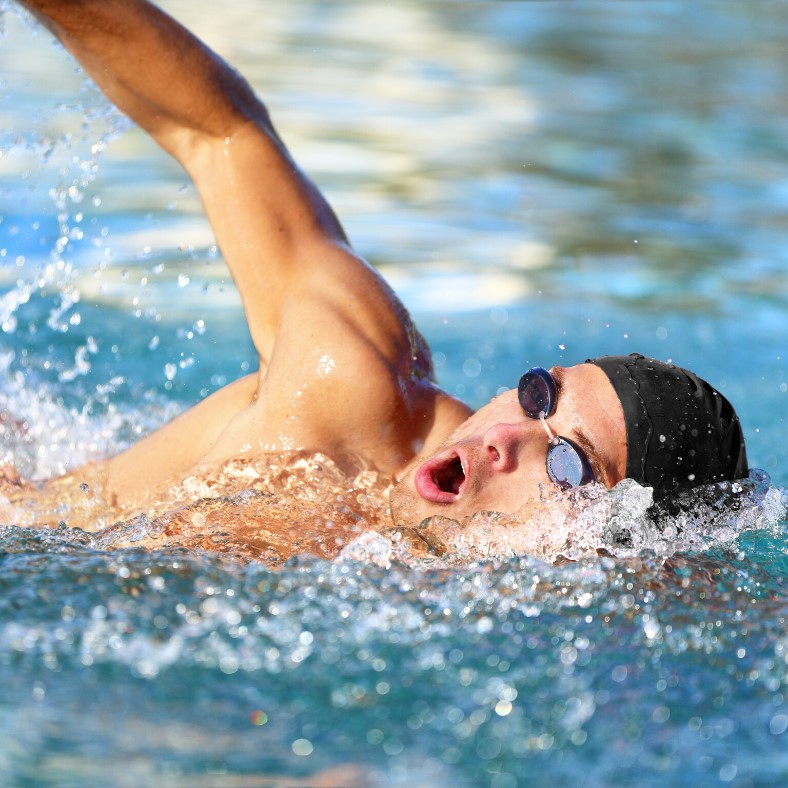Freestyle swimming is one of the most popular and versatile forms of aquatic exercise and competition. Whether you’re a beginner looking to learn the basics or an experienced swimmer aiming to refine your technique, understanding freestyle swimming can significantly enhance your performance and overall well-being. In this comprehensive guide, we will delve into the various aspects of freestyle swimming, including its techniques, benefits, training tips, and much more. By the end of this article, you’ll have a thorough understanding of freestyle swimming and how to incorporate it effectively into your fitness or competitive routine.
 Understanding Freestyle Swimming
Understanding Freestyle Swimming
Freestyle swimming, often referred to as the front crawl, is a swimming style characterized by its efficient and rapid movement through the water. It is the most commonly used stroke in competitive swimming and recreational activities alike.
Definition and History
Freestyle swimming is defined by its streamlined body position, alternating arm movements, and flutter kick. Historically, the front crawl evolved from various swimming techniques used by different cultures, eventually becoming standardized in competitive swimming. Its popularity stems from its speed and efficiency, making it the preferred stroke for racing and long-distance swimming.
Basic Techniques
Mastering the basics of freestyle swimming involves focusing on several key components:
- Body Position: Maintain a horizontal and streamlined position to reduce drag.
- Arm Movement: Alternate arms in a circular motion, entering the water with the fingertips first and pulling through to push the water behind you.
- Breathing: Turn your head to the side to inhale while keeping your body aligned and exhaling underwater.
- Kicking: Use a consistent flutter kick, originating from the hips, to provide propulsion and balance.
By concentrating on these fundamental techniques, swimmers can improve their efficiency and speed in the water.
 Benefits of Freestyle Swimming
Benefits of Freestyle Swimming
Engaging in freestyle swimming offers a multitude of benefits that extend beyond mere physical fitness. Here are some of the key advantages:
Physical Health Benefits
Freestyle swimming is an excellent full-body workout that enhances various aspects of physical health:
- Cardiovascular Fitness: Regular swimming increases heart rate and promotes better blood circulation.
- Muscle Strength and Tone: The resistance of water engages multiple muscle groups, leading to improved strength and muscle definition.
- Flexibility: The range of motion required for freestyle swimming helps enhance overall flexibility and joint mobility.
- Weight Management: Swimming burns a significant number of calories, aiding in weight loss and maintenance.
Mental Health Benefits
In addition to physical advantages, freestyle swimming contributes positively to mental well-being:
- Stress Relief: The rhythmic nature of swimming and the buoyancy of water provide a calming effect, reducing stress levels.
- Improved Mood: Physical activity releases endorphins, which help elevate mood and combat anxiety and depression.
- Enhanced Focus and Concentration: Swimming requires concentration on technique and breathing, which can improve mental clarity and focus.
- Increased Mental Resilience: Overcoming the challenges of swimming long distances or improving technique builds mental toughness and perseverance.
Techniques to Improve Swimming
Enhancing your freestyle swimming technique can lead to better performance and a more enjoyable swimming experience. Here are some effective strategies:
Breathing Techniques
Proper breathing is crucial for maintaining rhythm and efficiency in freestyle swimming:
- Bilateral Breathing: Practice breathing on both sides to ensure balanced muscle development and improved navigation.
- Exhalation Underwater: Focus on exhaling slowly and continuously while your face is in the water to minimize breath-holding and reduce the need for multiple breaths.
- Timing: Synchronize your breathing with your arm movements, typically taking a breath every two or three strokes to maintain a steady rhythm.
Stroke Efficiency
Improving stroke efficiency can significantly enhance your speed and reduce fatigue:
- Arm Entry and Extension: Ensure your hands enter the water smoothly and extend fully to maximize the pull phase.
- Catch and Pull: Focus on engaging your lats and pulling through the water forcefully to generate propulsion.
- Recovery: Maintain a relaxed and controlled arm recovery above the water to conserve energy and avoid unnecessary tension.
- Streamlining: Keep your body streamlined and minimize unnecessary movements to reduce drag and increase speed.
 Training Tips for Swimming
Training Tips for Swimming
Implementing structured training routines can help you achieve your freestyle swimming goals more effectively. Consider the following tips:
Building Endurance
Endurance is essential for sustained performance in freestyle swimming:
- Interval Training: Incorporate sets of varying distances with short rest periods to build aerobic and anaerobic capacity.
- Long-Distance Swims: Gradually increase the distance of your swims to improve stamina and endurance.
- Consistent Practice: Regular swimming sessions, at least three times a week, help maintain and enhance endurance levels.
Strength Training
Strength training complements swimming by building the necessary muscle groups:
- Core Exercises: Focus on strengthening your core with planks, sit-ups, and other abdominal exercises to maintain stability in the water.
- Upper Body Workouts: Incorporate push-ups, pull-ups, and weightlifting to enhance arm and shoulder strength for more powerful strokes.
- Leg Conditioning: Engage in squats, lunges, and calf raises to improve your kicking strength and efficiency.
Flexibility and Mobility
Maintaining flexibility and mobility is crucial for smooth and efficient swimming movements:
- Dynamic Stretching: Perform dynamic stretches before swimming to prepare your muscles for activity.
- Static Stretching: Incorporate static stretches post-swim to enhance muscle recovery and flexibility.
- Yoga and Pilates: These practices can improve overall flexibility, balance, and core strength, benefiting your freestyle swimming technique.
Common Mistakes in Swimming and How to Avoid Them
Identifying and correcting common mistakes can lead to significant improvements in your freestyle swimming:
Poor Body Position
A horizontal and streamlined body position is essential:
- Solution: Focus on keeping your hips and legs at or near the surface of the water. Engage your core to maintain alignment and reduce drag.
Inefficient Breathing
Improper breathing can disrupt your rhythm and oxygen supply:
- Solution: Practice bilateral breathing and ensure you exhale fully underwater. Maintain a steady breathing pattern aligned with your stroke.
Overreaching
Overreaching occurs when your arms extend too far forward, causing a loss of balance:
- Solution: Keep your arm extension controlled and aligned with your body. Avoid stretching too far, which can waste energy and reduce stroke efficiency.
Lack of Kick
Neglecting your kick can lead to loss of propulsion and balance:
- Solution: Incorporate a consistent flutter kick, originating from the hips. Practice kicking drills to strengthen and coordinate your leg movements.
Tension and Stiffness
Excessive tension can hinder smooth and efficient movements:
- Solution: Stay relaxed, especially in your shoulders and neck. Practice swimming drills that promote fluidity and ease of movement.
 Swimming Equipment and Gear
Swimming Equipment and Gear
Having the right equipment can enhance your freestyle swimming experience:
Swimwear and Accessories
- Swimsuits: Choose a comfortable and well-fitting swimsuit that allows for unrestricted movement. Competitive swimmers may opt for more streamlined, tight-fitting suits.
- Goggles: Invest in high-quality goggles that provide clear vision and a comfortable fit to protect your eyes from chlorine and debris.
- Swim Caps: Use a swim cap to reduce drag, protect your hair, and maintain hygiene in the pool.
Training Aids
- Kickboards: Utilize kickboards to focus on your kicking technique without engaging your arms.
- Fins: Incorporate fins to enhance your propulsion and improve ankle flexibility.
- Pull Buoys: Use pull buoys to isolate and strengthen your upper body by preventing leg movement during training.
- Resistance Bands: Employ resistance bands to add an extra challenge to your workouts, building strength and stamina.
Technology Aids
- Swim Watches and Trackers: Monitor your performance with swim-specific watches and trackers that provide data on distance, pace, and strokes.
- Underwater Cameras: Analyze your technique using underwater cameras to identify areas for improvement.
- Apps and Software: Utilize swimming apps and software that offer training plans, technique tips, and performance tracking.
Swimming for Different Skill Levels
Freestyle swimming caters to a wide range of skill levels, each requiring different approaches and techniques:
Beginners
For those new to freestyle swimming, focus on mastering the basics:
- Learning the Stroke: Start by understanding the fundamental arm and leg movements.
- Breathing Techniques: Practice rhythmic breathing to maintain oxygen flow and prevent fatigue.
- Building Confidence: Spend time in the water to become comfortable and build confidence in your abilities.
Intermediate Swimmers
Intermediate swimmers can work on refining their technique and increasing endurance:
- Technique Refinement: Focus on perfecting stroke mechanics and minimizing drag.
- Endurance Training: Incorporate longer swims and interval training to build stamina.
- Speed Work: Engage in speed drills and sprints to enhance your overall speed and performance.
Advanced Techniques
Advanced swimmers can adopt more sophisticated techniques to maximize efficiency and speed:
- Advanced Drills: Incorporate drills that target specific aspects of your stroke, such as fingertip drag, catch-up, and sculling.
- Pacing Strategies: Develop effective pacing strategies to sustain high performance over various distances.
- Competitive Training: Engage in competitive training sessions and participate in swim meets to challenge and improve your skills.
Nutrition and Hydration for Freestyle Swimmers
Proper nutrition and hydration are crucial for optimal performance and recovery in freestyle swimming:
Pre-Swim Nutrition
Fuel your body with the right nutrients before swimming:
- Carbohydrates: Consume complex carbohydrates like whole grains and fruits to provide sustained energy.
- Protein: Include lean proteins such as chicken, fish, or tofu to support muscle repair and growth.
- Hydration: Ensure you are well-hydrated by drinking water or electrolyte-rich beverages before your swim.
During-Swim Hydration
Stay hydrated during long swim sessions:
- Water: Take regular water breaks to replenish lost fluids.
- Electrolytes: For intensive or extended swims, consider electrolyte drinks to maintain electrolyte balance and prevent dehydration.
Post-Swim Recovery
Aid your recovery with the right post-swim nutrition:
- Protein: Consume a protein-rich meal or snack to repair and build muscles.
- Carbohydrates: Replenish glycogen stores with carbohydrate-rich foods.
- Hydration: Continue to hydrate to replace fluids lost during swimming.
Balanced Diet
Maintain a balanced diet to support overall health and performance:
- Variety of Foods: Incorporate a wide range of foods to ensure you receive all necessary vitamins and minerals.
- Healthy Fats: Include sources of healthy fats like avocados, nuts, and olive oil for sustained energy and joint health.
- Fruits and Vegetables: Consume plenty of fruits and vegetables to provide antioxidants and support immune function.
Swimming Competitions and Events
Participating in freestyle swimming competitions can enhance your skills and provide a sense of achievement:
Local Swim Meets
Join local swim clubs and participate in community swim meets to gain competitive experience and meet fellow swimmers.
Regional and National Championships
Compete in regional and national championships to challenge yourself against higher-level competitors and showcase your abilities on a larger stage.
International Competitions
For elite swimmers, international competitions like the Olympics and World Championships offer opportunities to represent your country and compete at the highest level.
Masters Swimming
Masters swimming provides a competitive platform for adult swimmers of all ages and skill levels, promoting lifelong fitness and camaraderie.
Open Water Events
Explore open water freestyle swimming events such as marathons and triathlons, which offer unique challenges compared to pool swimming.
 Frequently Asked Questions (FAQ)
Frequently Asked Questions (FAQ)
What is freestyle swimming?
Freestyle swimming, also known as the front crawl, is a swimming style characterized by alternating arm movements and a flutter kick. It is the fastest and most efficient stroke used in competitive swimming.
How can I improve my freestyle swimming technique?
To improve your technique, focus on maintaining a streamlined body position, practicing proper arm movements, ensuring efficient breathing, and strengthening your core and leg muscles. Additionally, engaging in regular drills and seeking feedback from a coach can help refine your stroke.
What are the benefits of freestyle swimming?
Freestyle swimming offers numerous benefits, including enhanced cardiovascular fitness, muscle strength and tone, improved flexibility, weight management, stress relief, and better mental focus and resilience.
How often should I train for freestyle swimming?
The frequency of training depends on your goals and fitness level. Beginners may benefit from swimming two to three times a week, while competitive swimmers might train five to six times weekly, incorporating diverse workouts to build endurance, strength, and speed.
What equipment do I need for freestyle swimming?
Essential equipment includes a well-fitting swimsuit, goggles, a swim cap, and optionally, training aids such as kickboards, fins, pull buoys, and resistance bands. Additionally, swim watches and underwater cameras can help track and analyze your performance.
Can freestyle swimming help with weight loss?
Yes, freestyle swimming is an effective way to burn calories and aid in weight loss. The combination of cardiovascular exercise and resistance training provided by swimming helps increase metabolism and build lean muscle mass.
Is freestyle swimming suitable for all ages?
Absolutely. Freestyle swimming is a low-impact exercise that can be enjoyed by people of all ages, from young children to older adults. It offers benefits for physical and mental health, making it a versatile activity for the entire family.
How do I prevent common injuries in freestyle swimming?
To prevent injuries, ensure you warm up properly before swimming, maintain good technique to avoid overuse of certain muscle groups, and listen to your body to avoid overtraining. Incorporating strength and flexibility training can also help reduce the risk of injury.
Final Thoughts
In summary, freestyle swimming is a dynamic and rewarding activity that offers a wealth of benefits for both physical and mental well-being. By mastering the techniques, understanding the advantages, and implementing effective training strategies, you can enhance your freestyle swimming performance and enjoy a fulfilling aquatic experience. Whether you’re aiming to compete at higher levels or simply seeking a healthy and enjoyable way to stay active, freestyle swimming provides the perfect blend of challenge and satisfaction. Embrace the art of freestyle swimming, and let it transform your approach to fitness and recreation.